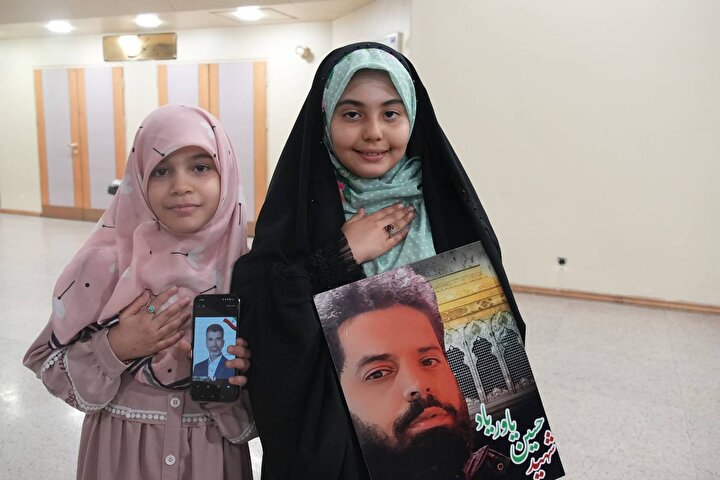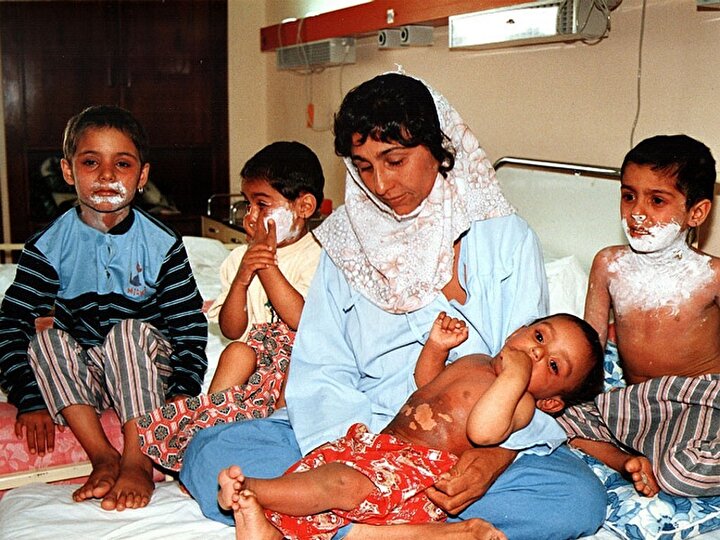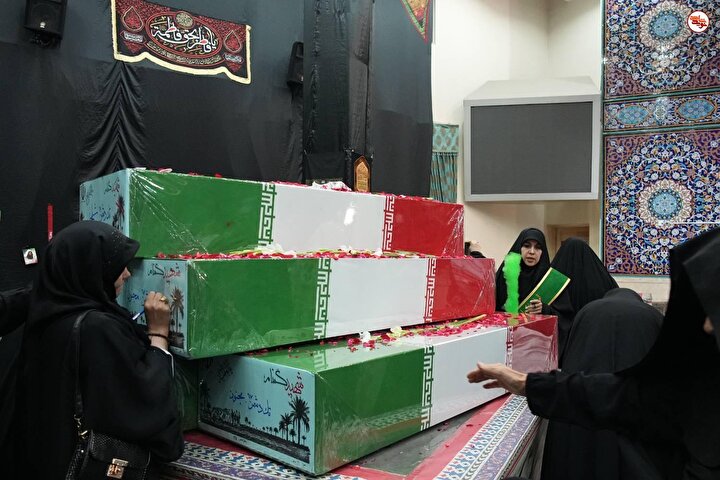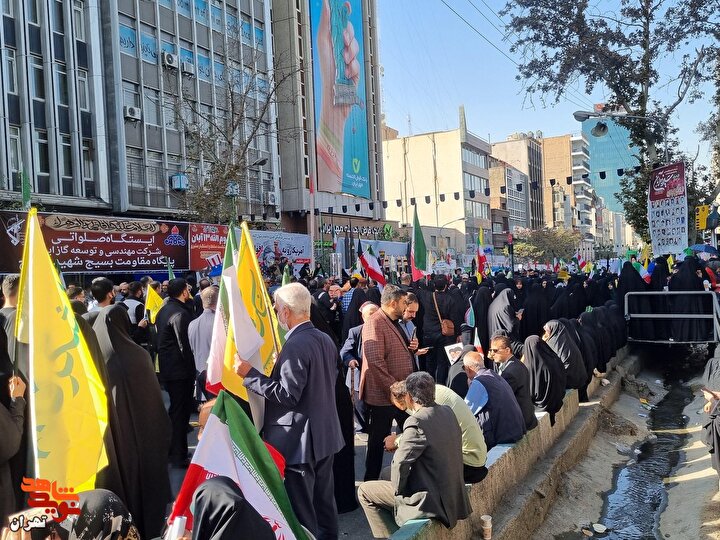CIA-Mossad backed MEK resembles ISIS in many ways: analyst

Mohammad Reza Pahlavi, and the leader of the MEK, Masoud Rajavi, formed cults of personality around themselves. Many people are attracted to cults, some of whom are willing to engage in deadly violence for the sake of being a member. One can see this type of behavior among members of Daesh.
Yuram Abdullah Weiler is a former engineer educated in mathematics turned writer and political critic who has written over 130 articles on Islam, social justice, economics, and politics focusing mainly on the Middle East and U.S. policies. His works have been largley published across the globe. In addition, he has frequently appeared as a guest commentator on Press TV, Al Etejah, and Alalam. A dissenting voice from the "Belly of the Beast”, he currently lives inLas Cruces, New Mexico, USA. In an exclusive interview with Khamenei.ir, Mr. Abdullah elaborates on the U.S.- West support for the notorious MEK terrorist organization. The following is the full text of the interview:
The MEK terrorists assassinated the Iranian President and PM of the time - Muhammad Ali Rajai and Javad Bahonar - on August 30th; how do you evaluate the West and the U.S.’s support effective in the execution of such crimes?
The United States has a long history of state-sponsored terrorism against Iran beginning in 1953 with the CIA-engineered coup of the legitimate government of Iran by covert action. This was followed by 25 years of rule by the U.S.-supported dictator, Mohammed Reza Pahlavi, whose brutal security force, the SAVAK, was responsible for the death and torture of thousands of Iranians. U.S. policy since the time of the victory of the Islamic Revolution in February 1979 has been one of recapturing the country that former President Jimmy Carter "lost” on his watch.
U.S. state-sponsored terrorism directed against Iran has included support of terrorist organizations such as Jundullah based in Pakistan, assassination of senior Iranian nuclear scientists by agents of the terrorist organization Mujahedin-e Khalq (also known by acronyms MeK, MKO, PMOI), a draconian regimen of economic sanctions, and launching proxy wars against Iranian allies such as Syria. Just as the U.S. used the Afghan mujahedin to fight a proxy war against the Soviet Union in Afghanistan, the U.S. is now using the MKO in conjunction with Mossad to fight a covert war against the government of the Islamic Republic of Iran.
The relationship of the U.S. and the MKO certainly dates back to the Islamic Revolution, but prior to 1975, when the MKO split into Islamic and Marxist factions and was under severe repression from the shah, it is doubtful that the organization was receiving any support from Washington. However, there is evidence that the CIA was attempting to infiltrate the MKO by recruiting the first president of Iran, Abol Hassan Bani Sadr, while he was still in Paris in January 1979 when CIA agent Vernon Cassin offered him $5,000 a month to act as a "consultant” for a U.S. company.
What is certain is that MKO leader Masoud Rajavi, along with twenty members of his organization, paid a visit to Ayatollah Hussein Ali Montazeri on 25 October 1978 in Evin Prison seeking a leading role for the MKO in the post-revolutionary government. Rajavi explicitly told Montazeri to pass a message to Imam Khomeini in Paris that the MKO would be the only group capable of administering Iran. Suspiciously enough, on 30 October, Montazeri was released and was "debriefed” by SAVAK chief general Nasser Moqaddam. It is certainly possible that this was an initial vetting of Rajavi and the MKO by Washington for being an acceptable "Iranian opposition.”
In the days following the 15 June 1981 impeachment of Abol Hassan Bani Sadr, the MKO called for massive demonstrations against the nascent Islamic government of Iran compelling security officials to initiate a crackdown on the group. On June 28, the MKO launched a series of lethal terrorist attacks in an attempt to topple the government beginning with the bombing of the headquarters of the Islamic Republic Party during a meeting of party leaders, killing Ayatollah Mohammed Beheshti along with four cabinet ministers, twenty-seven members of the Majlis and several other government officials for a total of 72 fatalities. On August 30 just after 2:30 p.m., another bomb planted by an MKO operative, most likely Masoud Kashmiri, detonated killing President Mohammed Ali Rajai and Prime Minister Mohammad Javad Bahonar.
In the aftermath of the attempted overthrow of the government in June 1981 by the MKO that had Bani Sadr’s support, he and MKO leader Masoud Rajavi, whose second wife was Bani Sadr’s daughter, along with other leaders of the organization, fled Iran for Paris on July 29 where they established the National Council of Resistance (NCR). After being evicted from France in 1986, Rajavi relocated the MKO to Iraq, where, receiving asylum and financial support from Iraqi dictator Saddam, he formed the National Liberation Army (NLA), the military wing of the MKO, with himself as commander in chief. The NLA used Iraq as a base to launch multiple attacks across the border into Iran. In June and July 1988, the NLA participated in a joint invasion into Iran with Iraqi forces, which used chemical weapons against Iranians.
By 1988 during the Sacred Defense, the MKO had become a U.S. asset as evidenced by National Council of Resistance of Iran (NCRI) mouthpiece Alireza Jafarzadeh’s admission that, by that time, the MKO possessed hundreds of millions of dollars’ worth of tanks, armored personnel carriers and field guns. The claim that such a huge cache of heavy weaponry was acquired from cross-border raids into Iran simply does not ring true. Other evidence of U.S. involvement in the 30 August bombing can be gleaned from the fact that Bani Sadr and Rajavi were whisked out of Iran in a Boeing 707 military tanker piloted by Colonel Behzad Moezzi, who was in the cockpit of the shah’s plane when he fled from Iran to Aswan, Egypt on 16 January 1979.
Since then, the U.S. has even trained members of the MKO at the U.S. Department of Energy Nevada Security Site under the auspices of the Joint Operations Special Command between 2005 and 2008. Additionally, senior U.S. officials have confirmed that the MKO, working through the Zionist spy organization, Mossad, has been responsible for carrying out the assassinations since 2007 of five top Iranian scientists: Mostafa Ahamdi Roshan on Jan. 11, 2012; Darioush Rezaei-Nejad on July 23, 2011; Majid Shahriari on November 29, 2010; Massoud Ali-Mohammadi on January 12, 2010; and, Ardeshir Hosseinpour on January 15, 2007.
Why did MKO terrorists kill both officials as well as ordinary Iranian citizens?
During that reign of terror in 1981, the MKO targeted Friday prayer leaders, including those in Tabriz, Kerman, Shiraz and Yazd, as well as minor government officials, members of the Revolutionary Guard, prison wardens and even ordinary citizens. Such random violence fits well with the definition of terrorism used by the United States Department of Defense (DoD):
"The calculated use of unlawful violence or threat of unlawful violence to inculcate fear; intended to coerce or to intimidate governments or societies in the pursuit of goals that are generally political, religious, or ideological.”
While I am by no means qualified to voice an opinion on the psychology of terrorism, I would point out that the terrorist engages in violent activities under an assumption that this will cause a political change. However—and I believe the MKO is a good example of this—political change can, in turn, precipitate terrorism. While MKO members apparently did contribute to the victory of the Islamic Revolution in Iran, nevertheless following the victory of the Islamic Revolution, because of unfulfilled aspirations of leadership in the new government, ideological disagreement with the direction set by Imam Khomeini and other factors, the MKO mutated into a terrorist organization, and turned viciously against the fledgling Islamic government voted upon by the people of Iran.
Shahid Rajai was severely tortured on the hands of SAVAK and then martyred by MKO in a bomb explosion. What is the common enmity of the thugs of the shah and MKO with Iranian revolutionaries like Shahid Rajai?
To discuss the enmity, one would have to delve into the psychological factors motivating individuals to join with others and resort to extreme violence, whether deemed as terrorist or state-mandated, in order to achieve political goals. To study such factors scientifically remains a near impossibility, since few legitimate researchers have direct access to terrorist groups over long periods of time to gather data for analysis. Certainly there is no single causative factor, such as mental illness or low childhood self-esteem that causes the embrace of enmity.
Beyond the psychological factors, the thugs of the shah and the MKO appear to have shared a common goal of suppressing the desire of the Iranian people to have an Islamic form of governance. The common denominator seems to be the use of extreme violence for the imposition of a political goal. In the case of the shah, it was the perpetuation of his U.S.-supported regime, and in the case of the MKO, it was instituting an authoritarian Marxist regime.
From another aspect, one can say that the former shah, Mohammad Reza, and the leader of the MKO, Masoud Rajavi, both formed cults of personality around themselves. Both used media to surround themselves with an idealized, mystical aura, and both pursued and promoted radical ideologies: the shah with his "White Revolution” of westernization and marginalization of Islam, and Rajavi, with his obsession with toppling the legitimate Islamic government of Iran and assuming the leadership role himself. Many people are attracted to cults, some of whom are willing to engage in deadly violence for the sake of being a member. One can see this type of behavior among members of Daesh.
How do you analyze all the fuss MKO is making these days by meeting with the dictators of certain countries?
On 9 July 2016, former Saudi intelligence chief and former Saudi ambassador to Britain and the United States Prince Turki al-Faisal Al Saud spoke for 30 minutes before a crowd in Paris, France gathered for the annual conference of the MKO. This is not totally surprising, for there has been a long list of U.S. politicians, including Newt Gingrich, the former speaker of the House, Bill Richardson, a former New Mexico governor and U.N. ambassador under Bill Clinton, and former Vermont governor Howard Dean, have spoken to and received handsome fees from the MKO. These fees, in the neighborhood of $25,000 each, may have been funded by Saudi Arabia, so covert support of the MKO may not be a recent development.
In contrast, al-Faisal’s overtly inflammatory rhetoric against Ayatollah Khomeini however was indeed shocking. Crudely stating that Iran was infected with a "Khomeini cancer,” al-Faisal, openly called for regime change by declaring, "I, too, want the downfall of the regime.” The rhetoric directly threatening the Islamic Republic of Iran may have been for its support of the legitimate government in Syria, Lebanese Hezbollah, and for its support of Houthi resistance fighters in Yemen. At a minimum, al-Faisal’s announcement certainly chills any further incentive for Tehran to deice diplomatic relations with Riyadh.
The U.S. the Israeli entity and the Saudis appear to have convergent interests in destabilizing Iran with the ultimate goal of toppling the Islamic government and installing a pro-western client regime. Certainly U.S. and Saudi support for terrorist organizations to fight their proxy wars is nothing new and the symbiotic relationship dates back to the 1980s, when Washington and Riyadh partnered to fund the Afghan mujahedin, which later morphed into the terrorist group al-Qa’idah.
As far as Mahmoud Abbas’ meeting with Maryam Razavi three weeks after al-Faisal’s disclosure, it is not clear what the aging American puppet hoped to accomplish. As a largely irrelevant figure in the fight for the rights of the oppressed Palestinian people, Abbas may have simply desired to show himself as associating with an opponent of Iran, which is a requirement to remain in the good graces of the U.S. and the Israeli entity. On the other hand, the Abbas-MKO meeting may signal the reestablishment of a Fatah-MKO coalition, which fought together against Iran during the 1980-1988 Iraq-imposed (and U.S.-backed) war.
KHAMENEI.IR




